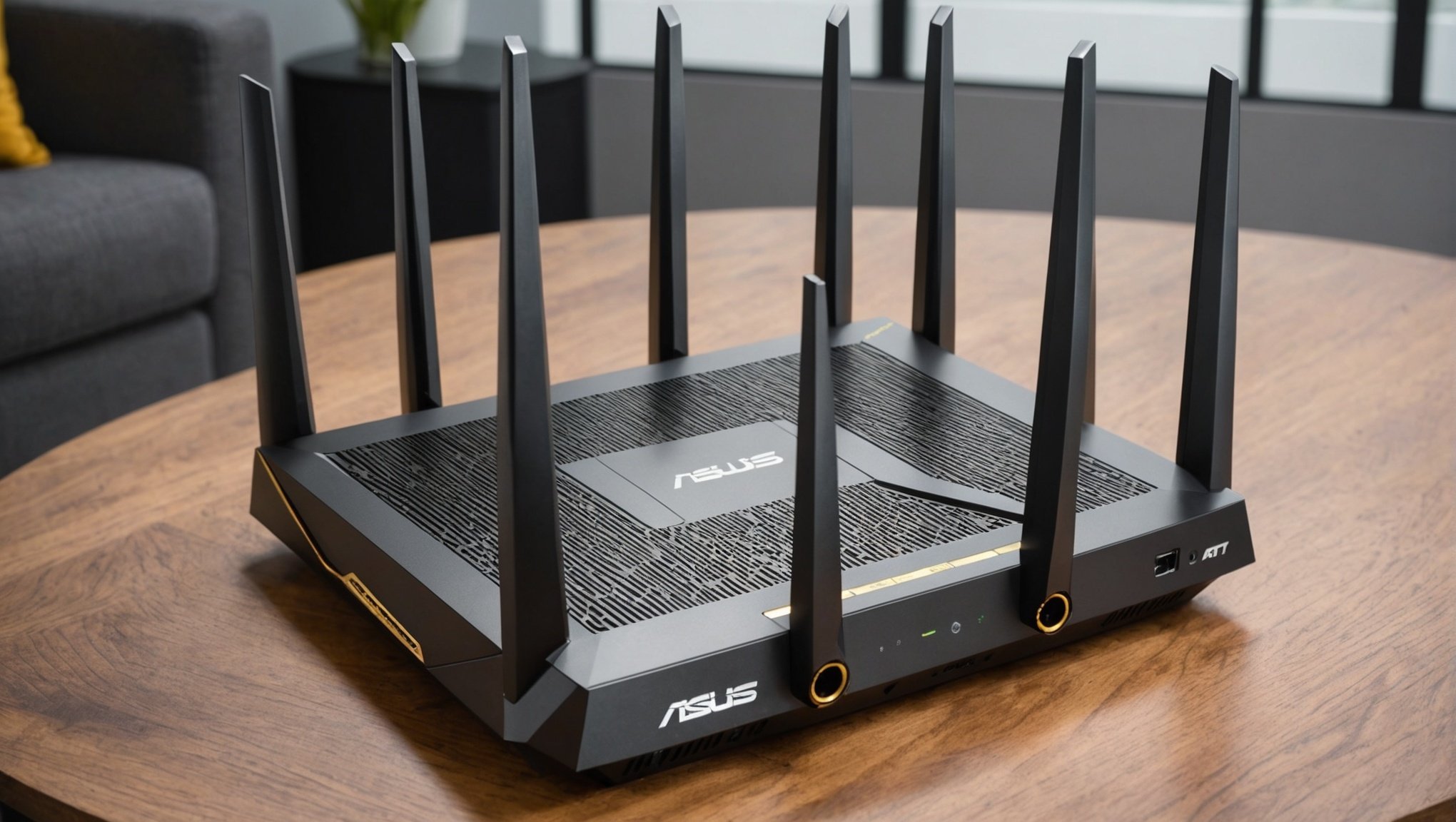In an increasingly interconnected world, the Internet of Things (IoT) has revolutionized how we interact with our environments. From smart thermostats to security cameras, IoT devices bring unprecedented convenience but also present significant cybersecurity risks. To mitigate these threats, setting up a secure IoT network is crucial. This article will guide you through the best practices for creating a secure IoT network using the ASUS RT-AX88U router, a high-performance device renowned for its robust security features.
Understanding the Importance of IoT Network Security
In a landscape where cyber threats are growing more sophisticated, securing your IoT network is imperative. Each connected device acts as a potential entry point for malicious attacks. By securing your network, you not only protect sensitive data but also maintain the integrity and functionality of your IoT devices. The ASUS RT-AX88U router stands out with its advanced security measures, making it an excellent choice for this task.
Additional reading : What steps should be taken to optimize a Dell Precision 5540 for 3D rendering using Blender?
The Growing Threat of IoT Security Breaches
IoT devices, due to their often-limited security measures, can be particularly vulnerable to attacks. Hackers can exploit these devices to gain unauthorized access to your network, leading to data theft, privacy breaches, and even control over your IoT devices. Such scenarios underscore the need for stringent security practices.
The Role of ASUS RT-AX88U in IoT Security
The ASUS RT-AX88U router offers cutting-edge features like Wi-Fi 6, AiProtection, and Advanced Parental Controls. These features work together to provide a secure, high-speed network environment. By leveraging these capabilities, you can significantly reduce the risk of cyber threats to your IoT devices.
Also to read : How do you ensure optimal cooling and airflow in a compact SFF case housing an Intel Core i7-10700K?
Setting Up Your ASUS RT-AX88U Router for Optimal Security
To secure your IoT network, the first step is to correctly set up your ASUS RT-AX88U router. Proper configuration is critical for leveraging the router’s full range of security features.
Initial Configuration and Firmware Updates
When you first set up your ASUS RT-AX88U router, ensure it is connected to your modem and powered on. Access the router’s web interface through a browser and follow the setup wizard. One of the first actions you should take is to update the router’s firmware. Firmware updates often include important security patches that protect against newly discovered vulnerabilities.
Changing Default Login Credentials
One of the most basic but essential security steps is changing the default login credentials of your router. Default usernames and passwords are well-known to cybercriminals. By setting a strong, unique password, you can prevent unauthorized access to your router’s administrative settings.
Enabling WPA3 Encryption
The ASUS RT-AX88U supports WPA3, the latest and most secure Wi-Fi encryption standard. Navigate to the Wireless settings on your router’s web interface and ensure that WPA3 is enabled. If your IoT devices do not support WPA3, WPA2 is the next best option. Strong encryption helps to protect the data transmitted between your IoT devices and your network.
Advanced Security Features of the ASUS RT-AX88U Router
To fully secure your IoT network, it’s important to utilize the advanced security features offered by the ASUS RT-AX88U router. These features provide additional layers of protection against various cyber threats.
AiProtection Pro
ASUS AiProtection Pro, powered by Trend Micro, is one of the standout features of the RT-AX88U router. It provides comprehensive network security, including malicious site blocking, vulnerability protection, and injection prevention. By enabling AiProtection, you can shield your network from a wide range of cyber threats.
Setting Up a Guest Network
Creating a guest network is a strategic way to segregate IoT devices from your primary network. This isolation limits the potential damage in case an IoT device is compromised. On the ASUS RT-AX88U, setting up a guest network is straightforward. Navigate to the Guest Network settings and create a separate network with a unique SSID and strong password.
Enabling Parental Controls
Although primarily designed for managing your children’s internet usage, Parental Controls can also be used to regulate the activity of your IoT devices. By setting usage schedules and filtering content, you can reduce the risk of unauthorized access and malicious activity on your network.
Implementing Network Segmentation and Traffic Monitoring
Network segmentation and traffic monitoring are advanced techniques that significantly enhance the security of your IoT network. The ASUS RT-AX88U router provides the tools needed to implement these practices effectively.
VLANs and Network Segmentation
Virtual Local Area Networks (VLANs) allow you to segment your network into isolated sections. By placing your IoT devices on a separate VLAN, you can contain potential breaches and prevent them from affecting your primary network. The ASUS RT-AX88U supports VLAN configuration, making it easy to set up secure network segments.
Monitoring Network Traffic
Regularly monitoring network traffic helps to identify unusual or suspicious activity. The ASUS RT-AX88U includes built-in traffic monitoring tools that provide insights into data usage and device behavior. By keeping an eye on your network traffic, you can detect and respond to potential security threats promptly.
Implementing QoS (Quality of Service)
Quality of Service (QoS) settings can prioritize critical network traffic, ensuring that essential IoT devices receive the bandwidth they need. Properly configured QoS settings not only improve network performance but also help to mitigate Denial-of-Service (DoS) attacks by preventing network congestion.
Best Practices for Ongoing IoT Network Security
Securing your IoT network is not a one-time task; it requires ongoing vigilance and maintenance. Following best practices for continuous security can help you stay ahead of potential threats.
Regularly Updating Firmware and Software
Both your router and IoT devices may receive periodic updates that include security patches and new features. Make it a habit to check for and apply these updates regularly. The ASUS RT-AX88U router can be set to automatically check for firmware updates, ensuring that you always have the latest protections in place.
Strong Password Management
Use a password manager to generate and store unique, strong passwords for each of your IoT devices. Avoid using easily guessable passwords or reusing the same password across multiple devices. Strong passwords are a fundamental line of defense against unauthorized access.
Disabling Unnecessary Features
Many IoT devices come with features that you may not need. Disabling unnecessary features can reduce the attack surface of your network. For example, if your IoT device does not require remote access, turning off this feature can prevent outside attempts to gain control of the device.
Implementing Two-Factor Authentication
Whenever possible, enable two-factor authentication (2FA) for accessing your IoT devices and router settings. 2FA adds an extra layer of security by requiring a second form of verification in addition to your password. This makes it much harder for attackers to gain access even if they have your password.
Establishing a secure IoT network using the ASUS RT-AX88U router involves a combination of proper setup, utilizing advanced security features, and ongoing maintenance. By following the best practices outlined in this article, you can significantly reduce the risk of cyber threats and protect your valuable IoT devices. From enabling WPA3 encryption to creating VLANs and monitoring network traffic, each step contributes to a fortified network environment. With the ASUS RT-AX88U router, you have a powerful tool at your disposal to create a secure and efficient IoT network.
In summary, the key to securing your IoT network lies in staying informed, vigilant, and proactive. By continuously applying these best practices, you can ensure a robust defense against the ever-evolving landscape of cybersecurity threats. With the right approach and tools, securing your IoT network is not just achievable; it is a critical step in embracing the future of connected living.











